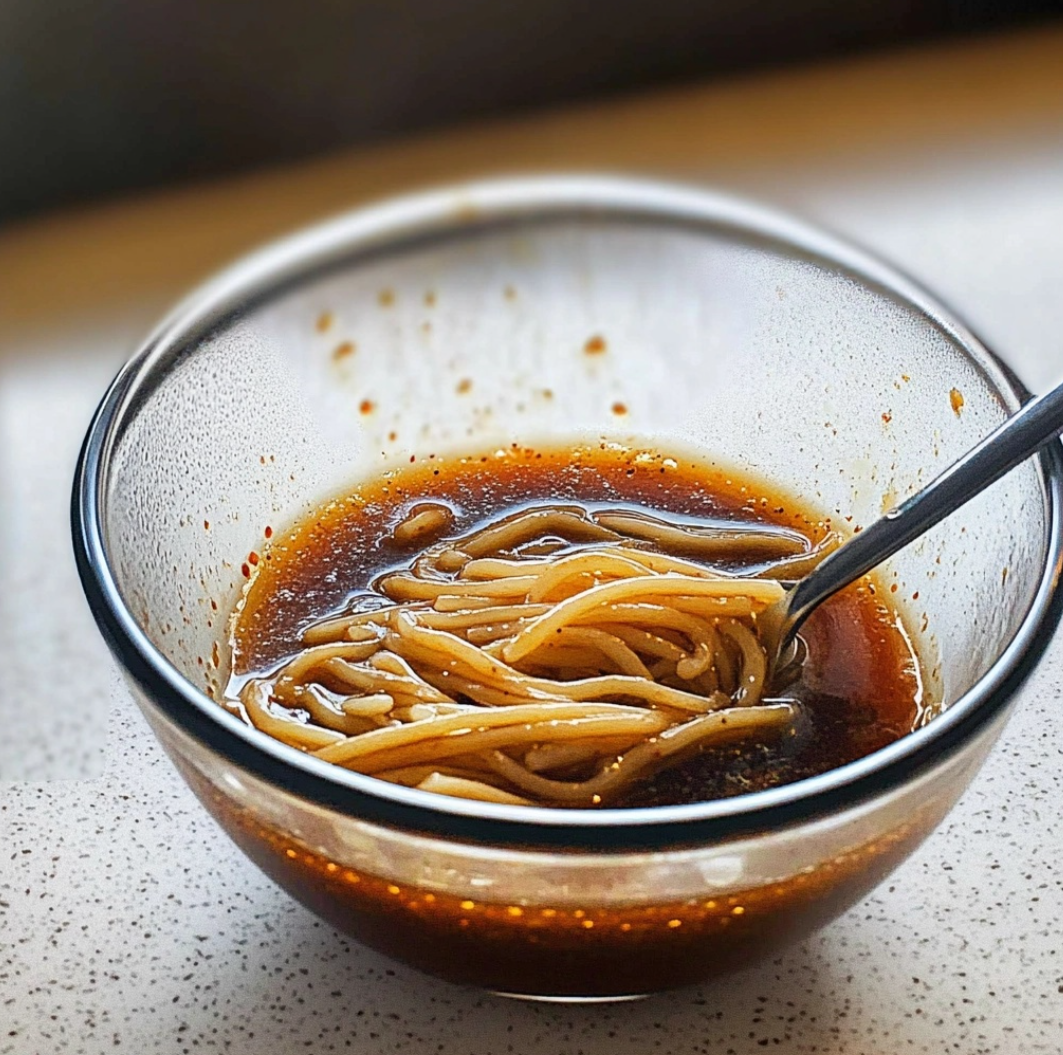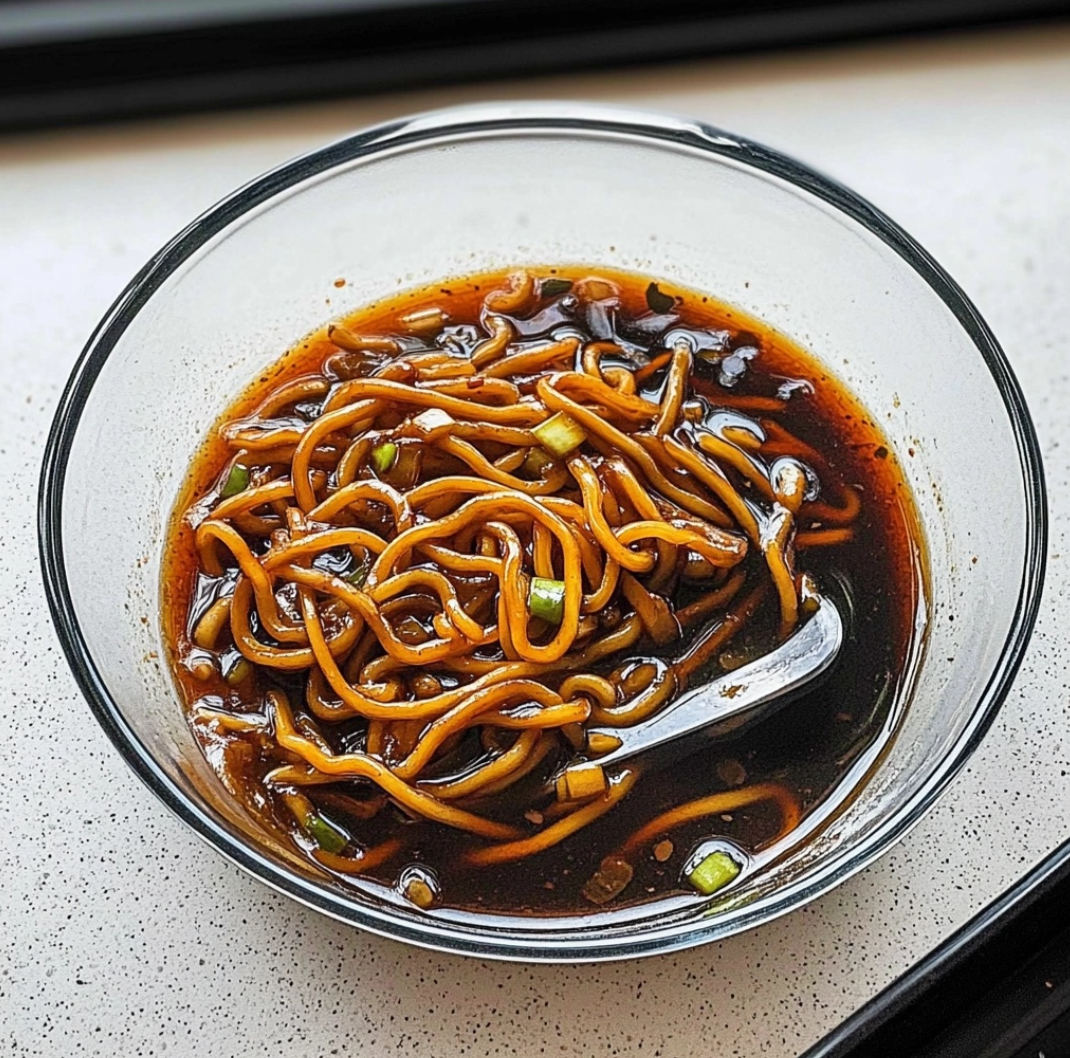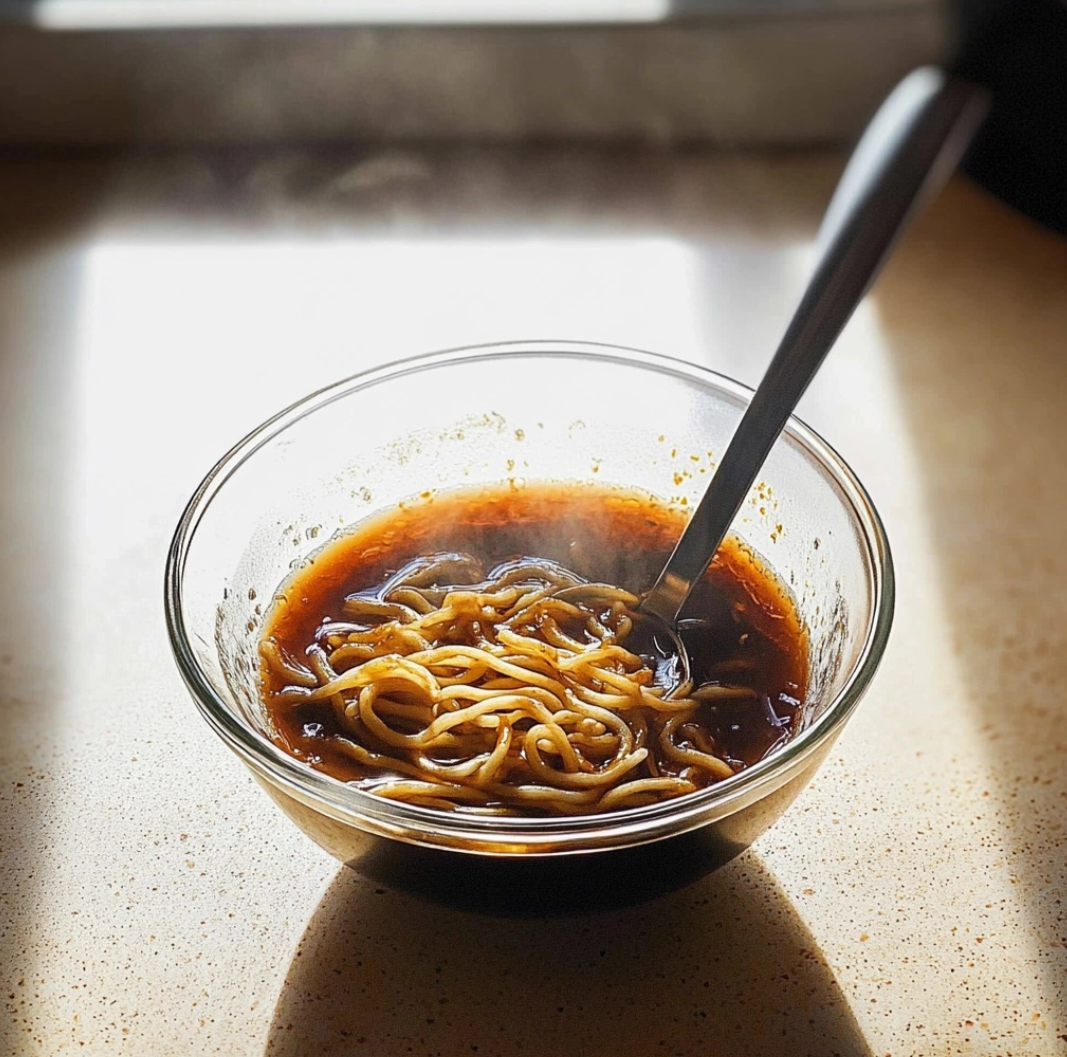Introduction to Homemade Lo Mein Sauce
Looking to add some tasty flair to your stir-fries? This homemade Lo Mein Sauce is quick, delicious, and full of flavor! In this article, we will explore everything you need to know about making this savory sauce, from the basics of the recipe to advanced techniques, maintenance tips, dietary adaptations, and frequently asked questions. Whether you’re a beginner or an experienced cook, this guide will help you master the art of creating the perfect Lo Mein Sauce.

Understanding Lo Mein Sauce
What is Lo Mein Sauce?
Lo Mein Sauce is a flavorful blend of ingredients that adds depth and richness to your stir-fried dishes, particularly those featuring noodles. The sauce typically includes soy sauce, oyster sauce, sesame oil, and various spices that work harmoniously to enhance the taste of the noodles and vegetables. This versatile sauce can be adjusted to suit your taste preferences, making it a staple in many kitchens.
The Benefits of Homemade Sauce
Making your own Lo Mein Sauce has several advantages. First and foremost, it allows you to control the ingredients, ensuring that everything is fresh and free from preservatives. Additionally, homemade sauce is usually more flavorful than store-bought versions, allowing you to customize the taste to your liking. Plus, it’s incredibly quick and easy to prepare!
Basic Recipe for Homemade Lo Mein Sauce
Ingredients
To create the perfect Lo Mein Sauce, gather the following ingredients:
- 1/4 cup soy sauce
- 3 tbsp oyster sauce
- 2 tbsp sesame oil
- 1 tbsp brown sugar
- 1/4 cup water
- 1/2 tsp garlic powder
- 1/2 tsp ginger powder
- Optional: 1 tsp cornstarch (for thickening)
Directions
- Combine the Sauces: In a bowl, combine the soy sauce, oyster sauce, sesame oil, brown sugar, and water. Mix until everything is nicely blended.
- Add Spices: Sprinkle in the garlic powder and ginger powder, then give it a good stir until well combined.
- Thicken (Optional): If you prefer your sauce a bit thicker, mix the cornstarch with a splash of water in a separate cup. Pour this mixture into your sauce and stir until it reaches your desired consistency.
- Ready to Use: Now, you’re ready to toss this delightful sauce into your stir-fried noodles or any Lo Mein dish. Enjoy the burst of flavor!
Advanced Techniques for Flavor Enhancement
Experimenting with Additional Ingredients
While the basic recipe is fantastic on its own, you can elevate the flavors even further by experimenting with additional ingredients. Here are some ideas:
- Fresh Garlic and Ginger: Substitute garlic powder and ginger powder with fresh minced garlic and ginger for a more vibrant flavor.
- Chili Paste or Sauce: For those who love heat, add a teaspoon of chili paste or sauce to the mix for a spicy kick.
- Green Onions and Sesame Seeds: Incorporate chopped green onions or toasted sesame seeds as a garnish for added texture and flavor.
Marinating with Lo Mein Sauce
Another advanced technique involves using the sauce as a marinade for proteins such as chicken, beef, or tofu. Simply toss your chosen protein in the sauce and let it marinate for at least 30 minutes before stir-frying. This step infuses the protein with delicious flavors, enhancing your dish.

Maintenance Tips for Your Lo Mein Sauce
Storage Guidelines
To keep your homemade Lo Mein Sauce fresh, consider the following storage tips:
- Refrigeration: Store any leftover sauce in an airtight container in the refrigerator. It should last for up to one week.
- Freezing: For longer storage, you can freeze the sauce in ice cube trays. Once frozen, transfer the cubes to a freezer-safe bag. This way, you can easily thaw only what you need for future meals.
Signs of Spoilage
It’s essential to know when your sauce has gone bad. If you notice any off odors, changes in color, or separation, it’s best to discard the sauce. Always prioritize food safety!
Dietary Adaptations for Lo Mein Sauce
Gluten-Free Options
If you’re looking for a gluten-free alternative, you can replace regular soy sauce with tamari or coconut aminos. Both options provide a similar umami flavor without the gluten.
Vegan and Vegetarian Adaptations
The original recipe includes oyster sauce, which is not suitable for vegans or vegetarians. You can substitute it with mushroom sauce or a plant-based oyster sauce to achieve a similar flavor profile without compromising your dietary preferences.
Low-Sodium Variants
For those monitoring their sodium intake, low-sodium soy sauce is an excellent alternative. You can also dilute the sauce with more water and adjust the seasoning to your taste.

Frequently Asked Questions (FAQs)
Can I use this sauce for other dishes besides Lo Mein?
Absolutely! This sauce is versatile and can be used for various stir-fry dishes, drizzling over grilled meats or vegetables, or even as a dipping sauce.
How can I adjust the sweetness of the sauce?
If you prefer a sweeter sauce, increase the amount of brown sugar. Alternatively, if you want it less sweet, reduce the sugar or omit it altogether.
Can I make this sauce in advance?
Yes, you can prepare the sauce in advance and store it in the refrigerator. Just give it a good stir before using, as some ingredients may settle over time.
What type of noodles should I use with Lo Mein Sauce?
Traditionally, Lo Mein is served with egg noodles, but you can also use wheat or rice noodles depending on your preference. Cook the noodles according to the package instructions before adding them to your stir-fried dish.
Is it possible to make a spicy version of this sauce?
Yes! To make a spicy version, add chili oil or sriracha to the sauce. You can adjust the amount based on your heat tolerance.

